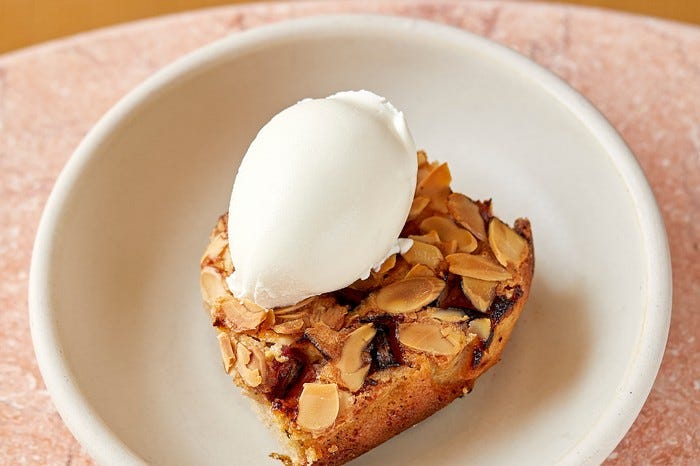5 Spring Plants + How to Eat Them
Tasty recipes for the return of the light
The light is slowly returning. Each day is minutes longer than the last, and fresh stems are shooting up from the ground. This week I have already seen bluebell tips and heard my favourite sound of spring - the tee-cher song of the great tit. The wheel of the year continues to turn and my tum continues to rumble, so here are five seasonal crops to feast upon this spring. Local and organic is best if you’re able 💚
Purple Sprouting Broccoli
An early spring delicacy topped with woolly florets, just the thing to cure those late winter blues. With the exception of the really tough parts of the stalks, every part of this crop is edible. Try it with complimentary flavours like sesame, lemon, orange or hazelnut.
Eat: February - May
Cook: Roast purple sprouting broccoli with smashed white beans
Read: The short story Broccoli by Russian-American writer Lara Vapnyar, first published in The New Yorker in January 2004.
Asparagus
With its sweet, earthy flavour, asparagus is one of my all-time favourite vegetables, perhaps the more precious for its short season in the UK, which traditionally runs from St George’s Day (21 April) to the Summer Solstice (21 June). Best lightly pan-fried in butter and garlic. Omg.
Eat: April - June
Cook: Asparagus, goat cheese and tarragon tart
Watch: This all-American video of a dance troupe from the 1982 National Asparagus Festival in Michigan.
Forced Rhubarb
According to legend, the first forced rhubarb was grown by accident in London’s Chelsea Physic Garden, when the plants were mistakenly covered over winter. As a result, the stalks were hot pink and shot up earlier than normal. I know rhubarb is a bit hit-or-miss, but I love combining them in pudding recipes with flavours of ginger and vanilla.
Eat: January - March
Cook: Rhubarb frangipane cake
Listen: This Atlas Obscura podcast on the dark underbelly of the Yorkshire Rhubarb Triangle.
Nettle
Super healthy, abundant and versatile, nettles can be added to any dish in place of spinach or spring greens. I’ve also made it into beer which worked surprisingly well (as long as you drink it ice cold). If you’re unsure where to start, add a few young leaves to curries, hotpots and stews.
Eat: February - April
Cook: Nettle soup
Watch: The Nettle Dress film, which follows textile artist Allan Brown as he grieves the loss of his wife, while spinning and weaving a dress over seven years made entirely from nettle fibres.
Wild Garlic
Also known as ramsons, from the Old English word hramsa, meaning ‘garlic’. Wild garlic likes growing in ancient, deciduous woodland - particularly on chalky soils like the South Downs, where I live. Start with pesto or butter and embrace having bad breath for two months of the year (it’s worth it).
Eat: February - April
Cook: Wild garlic bread
Read: The poem Wild Garlic by Irish poet and critic Seán Hewitt.
If you enjoyed this post…
My Concise Foraging Guide (Bloomsbury, 2021) is the perfect pocket companion for finding wild food this spring! It includes 194 edible fruits, nuts and seeds, flowers, greens and vegetables, herbs, roots, whole plants, fungi, seaweeds and shellfish that you can forage in the UK and Europe.










Living in Cumbria we will be a little behind on the nettles and wild garlic - but definitely gonna embrace and forage them when they sprout in a month or so. Have foraging book, will travel (well, mooch close to home!)